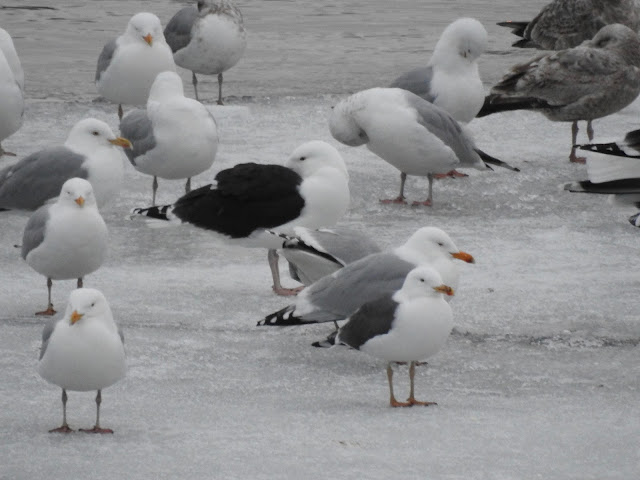Visitors from Europe
 |
| Lesser Black-backed Gull [Internet Photo] |
This species was first reported from Grand Manan in 1968 and 1975. Since then it has gradually become more common, now found annually along the Bay of Fundy and up the Saint John River as far as Fredericton. It is usually seen between March and May and then between September and November.
 |
| Lesser Black-backed Gull |
 |
| Lesser Black-backed Gull |
The photo above shows a Lesser sleeping with an adult Great Black-backed Gull behind. Note the size difference. The photo was taken in poor light so the leg colours are not discernible.
 |
| Lesser Black-backed Gull |
The photo above shows the yellow legs and the size comparison with the Herring Gulls and the single Great Black-backed Gull with which it is grouped.
The Lesser Black-backed Gull breeds in western Greenland and appears to be a non-breeder in this area. They like to associate with Herring Gulls and prefer the same feeding areas: beaches, dumps, fishing harbours, lakes, parking lots, and intertidal waters. It often feeds offshore over shelf areas.
Yesterday, April 5, a large group of these gulls was seen at Fredericton where they were associating with Herring and Great Black-backed Gulls. Twenty-two were counted with the likelihood of many more out of identification range. This is an unusually large number for this species. Obviously it was a migrating flock. They were mostly all adults. It is hard to believe these birds are non-breeders. I wonder if they were headed to a breeding area we don't know about. An exciting find and a beautiful species to observe.
No comments:
Post a Comment